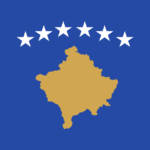
Nickel
3.360


3.360

4.000

3.100

8.063.051
Overview
Kosovo has varied geology that includes a number of exploitable metal and mineral deposits, including gold, chrome, nickel, aluminium, copper, iron metals, and lead-zinc. Kosovo also possesses the world’s fifth-largest proven reserves of lignite. Kosovo’s coal mines are the fuel source for over 90 percent of Kosovo’s power. There is some potential to also exploit gold, silver, and marble. The mining sector has traditionally been an important contributor to Kosovo’s economy, although the industry declined during the 1990s due to a lack of investment in equipment, facilities, and failure to develop new sites. Significant foreign investment potential exists in this sector, though the political situation makes such investments very difficult.
The Independent Commission for Mines and Minerals (ICMM) regulates Kosovo’s minerals sector, issues exploration and mining licenses, and ensures legislative compliance with international mining, environment, and safety standards. ICMM provides key technical information to prospective bidders.
Many of the existing mines have been privatized, with varying degrees of success. The Trepca mining complex contains Kosovo’s largest mines. At the height of production in the 1970s and 1980s, Trepca employed over 22,000 workers and accounted for more than 70 percent of Yugoslavia’s mineral extraction.
Mining resources
The territory of the Republic of Kosovo is characterized with a complex geological formation. This is proven by numerous older and contemporary geological formations. The great formational diversity, the intrusive and effusive activities, sediment effects and tectonics have impacted the formation of numerous important mineral types and resources, as well as energy, metallic and non-metallic minerals.1
Deposits of Lead (Pb), Zinc (Zn) and Silver (Ag)
The most important lead and zinc resources and appearances are located in the so-called “Metallogenic Trepça belt”, which lies in the northeastern part of the Republic of Kosovo, ranging from Albanik (Leposavic) to Gllame (Gjilan). The belt length is over 80km, whereas its average width is around 30km.
In the Republic of Kosovo, there is a number of developed mines (main mines) and a number of deposits that were assessed before but never developed. The (main) developed mines are: mine “Trepça” in Stantërg, Hajvalia, Badofci, Kizhnica, Artana, Bellobërda and Cërnaci.1
Leading Sub-Sectors
Opportunities